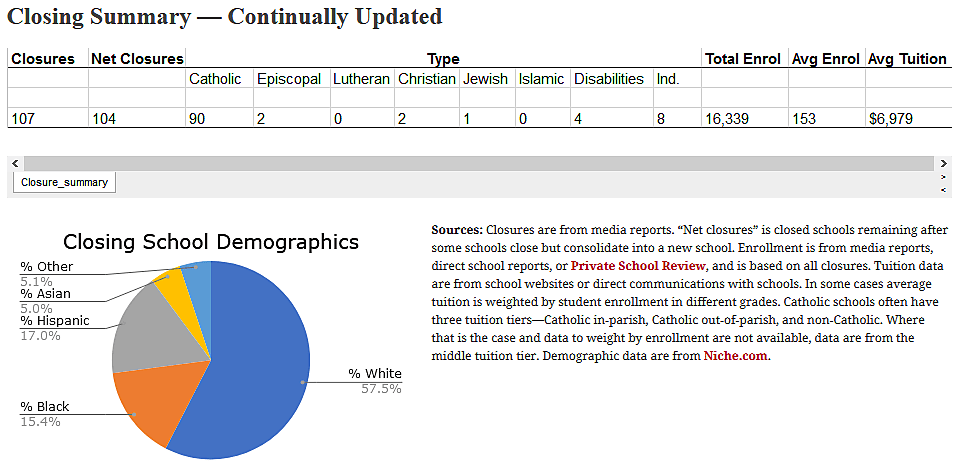When the COVID-19 lockdown began in earnest in late March, I started fearing doom for private schools. The economic consequences of near-total lockdown seemed likely to be devastating, in-turn clobbering private schools that, unlike public schools, do not have a claim on taxpayer money, and would see charitable dollars and the ability of families to pay dwindle. I thought we could potentially see shutterings reach the thousand mark. But with “only” 107 institutions on our tracker of private schools that will permanently close at least in part due to the COVID-19 financial situation, we are far shy of the worst-case scenario. Why?
I offer the following four possibilities, but would be interested to hear others:
- Too Early: Many schools may still be finalizing enrollment and revenue numbers for the coming school year, which may be especially in flux this summer as plans for public schools continue to evolve: all in-person, online, hybrid? It might be the case that the numbers I feared are coming, just not quite as quickly.
- Gaining Students: Related to uncertain numbers, we are seeing at least anecdotal evidence of increasing interest in private schools as public schools lean toward all online education, at least to start the school year. Maybe the potential loss of some students due to decreased ability to pay is being offset, or more than offset, by an influx of new students.
- Off the Radar: Our tracker may simply be missing closures. We discover closures primarily through media reports, though people are welcome to email nmccluskey@cato.org with announcements, and some folks have. It is possible that some closures, especially of smaller private schools, do not generate media reports. Perhaps one reason Roman Catholic schools make up such a large share of our closure list—about 84 percent—is that they tend to be part of dioceses, which are relatively large organizations likely to have press offices and to make announcements regarding multiple schools. Smaller, more independent schools may just inform families that they are going out of business.
- Paycheck Protection Program: This program, passed early in the federal coronavirus response, made up to $659 billion available to small businesses, including nonprofits, in the form of forgivable loans. The goal was to help recipients retain employees as well as handle expenses related to buildings. Many churches and independent private schools applied—including some wealthy ones—which may have helped to stave off insolvency for schools on the brink.
We need myriad options for families and teachers who are facing diverse health and educational priorities, which makes the lower-then-expected private school closure numbers a welcome bit of news. But we are far from out of the proverbial woods for private schools, and the right thing to do has always been to have money follow students, not fund government schools. COVID-19 only makes that policy change even more urgent.

